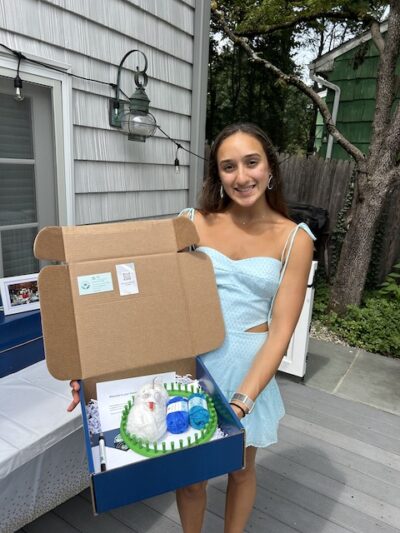Hats off to local nonprofit providing comfort to pediatric cancer patients

Since its beginnings in 2020, Greenwich-based Hats4Healing has donated more than 2,500 hats to comfort pediatric cancer patients globally.
“A big goal of mine over the years has been to establish a sense of community and unity,” said Hats4Healing president Sofia Iuteri, who started the nonprofit when she was 16 and is a rising sophomore at Washington & Lee University in Lexington, Virginia.
The organization has more than 200 volunteers worldwide, including students from Greenwich High School, local knitting groups, senior centers, retirement communities and church groups. But Iuteri is looking to broaden its presence.
Previously, she self-funded Hats4Healing with minimal donations. Now she’s looking for paid advertisers on its digital platforms.
Iuteri has also received a $6,000 Johnson Opportunity Grant from Washington & Lee University. She has allocated a significant portion of the grant to creating “knit-for-a-cause” kits, which she launched this summer in the hope that they will drive revenue, build community and foster volunteer engagement.
The knitting kits include knitting needles and yarn, step-by-step instructions for how to knit hats and custom Hats4Healing stationery to write a personalized note to a pediatric cancer patient.
“The ‘knit-for-a-cause’ initiative aims to further support the cancer community by enabling volunteers to create handmade hats that offer warmth, comfort and a sense of unity (with) pediatric patients,” Iuteri said.
The next step is to form partnerships with people like Taylor Sundby, M.D., a pediatric oncologist with the National Institute of Health (NIH) in Washington, D.C., and develop more involvement on the Washington & Lee campus as she seeks other granting opportunities.
As Iuteri added, “The Washington & Lee connection will enable Hats4Healing to reach hospitals in Washington, D.C., (and) surrounding regions that are medically underserved.”